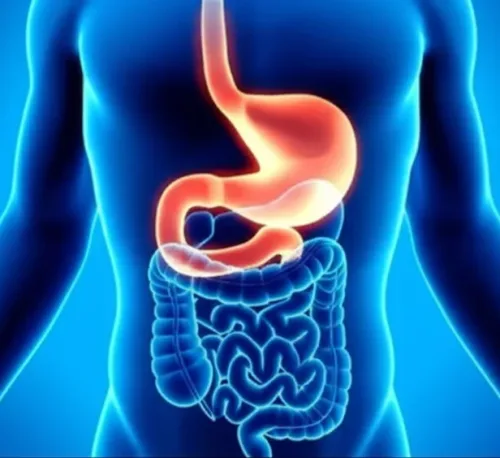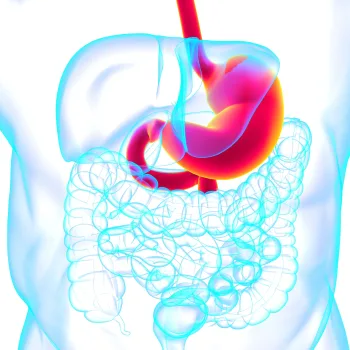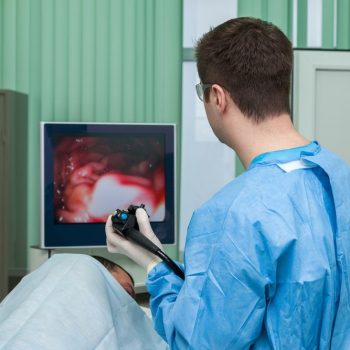Gastroscopy appointment
Schedule an Gastroscopy appointment in Israel within 24 - 48 hours
Looking for an Gastroscopy diagnostic appointment in Israel?
Medassist provides quick appointments for gastroscopy examination and other endoscopy tests with on-site results, and a consultation with the doctor about the findings. The examination are conducted privately by an experienced Gastroenterologist with many years of expertise.
Quick and Professional Services
Fast Appointments: Schedule your gastroscopy within 1–2 days at top medical centers in Israel and receive timely care from our expert gastroenterologists.
Expert Gastroenterologists: The examination performed and interpreted by senior gastroenterology specialists with extensive diagnostic experience.
Immediate Results & Consultation: Receive a detailed report and discuss the findings directly with your expert gastroenterologist, ensuring clarity and peace of mind.

Document Translation Services: We offer fast and accurate translation of medical documents between English and Hebrew at competitive, affordable rates, so you can share your results with specialists from your country if needed.
Insurance assistance: Our team assists with appointment scheduling, insurance handling (international insurance), and paperwork, including translation of documents, ensuring a smooth experience.
Book Your Gastroscopy Today: Schedule your gastro exam with our experienced gastroenterologists and get reliable, professional results with expert support every step of the way.
Contact Us to schedule Gastroscopy appointment
Complete the request form or Contact our team by phone
What is a Gastroscopy?
 A Gastroscopy, also known as an Upper Endoscopy or Upper Gastrointestinal (GI) Exam, is a medical procedure used to examine the inside of your esophagus, stomach, and duodenum (the first part of the small intestine). This simple and highly effective diagnostic test helps detect digestive disorders, stomach inflammation, ulcers, polyps, and even early signs of cancer.
A Gastroscopy, also known as an Upper Endoscopy or Upper Gastrointestinal (GI) Exam, is a medical procedure used to examine the inside of your esophagus, stomach, and duodenum (the first part of the small intestine). This simple and highly effective diagnostic test helps detect digestive disorders, stomach inflammation, ulcers, polyps, and even early signs of cancer.
During a gastroscopy procedure, a thin, flexible tube called an endoscope with a small camera at its tip is gently inserted through the mouth and guided down the throat. The camera transmits high-resolution images to a monitor, allowing the gastroenterologist to view the lining of the upper digestive tract in real time.
Why is a Gastroscopy (Endoscopy) Recommended?
Doctors may recommend a gastroscopy test if you experience:
- Persistent heartburn or acid reflux
- Abdominal pain or bloating
- Difficulty swallowing
- Nausea, vomiting, or unexplained weight loss
- Bleeding or black stools
The exam helps identify causes of these symptoms and guide the best treatment.
In some cases, your doctor may recommend performing a gastroscopy combined with a colonoscopy during the same visit. This approach allows your gastroenterologist to examine both the upper and lower gastrointestinal tract efficiently, reducing the need for multiple appointments while providing a comprehensive evaluation of your digestive system.
Book Your Gastroscopy Today
Schedule your gastroscopy test with our experienced specialists to ensure early detection, accurate diagnosis, and professional support throughout the process.
How Gastroscopy is Performed
A gastroscopy, also known as an upper endoscopy, GI endoscopy, or esophagogastroduodenoscopy (EGD), is a safe and effective diagnostic procedure used to examine the esophagus, stomach, and upper part of the small intestine (duodenum). It helps detect inflammation, ulcers, bleeding, and early signs of gastrointestinal diseases.
Here’s how the gastroscopy procedure is typically performed:
1. Preparation Before Gastroscopy
Proper preparation is essential to ensure a clear and accurate examination. Before the upper endoscopy, patients are usually advised to:
- Avoid eating or drinking for 6–8 hours before the procedure.
- Inform the doctor about all medications, allergies, and medical conditions.
- Adjust or stop certain medications, such as blood thinners, if instructed.
- Arrange for someone to accompany them home after the procedure, as sedation is commonly used.
2. During the Procedure
The gastroscopy exam is performed by an experienced gastroenterologist in a clinic or hospital setting.
- The patient lies comfortably on their side.
- A local anesthetic spray is used to numb the throat, and sedation is often given to ensure relaxation and a painless experience.
- The doctor gently inserts a thin, flexible endoscope (a tube with a camera and light) through the mouth and down the throat into the esophagus, stomach, and duodenum.
- The camera transmits real-time images to a monitor, allowing the doctor to carefully inspect the upper digestive tract for ulcers, inflammation, tumors, or bleeding.
3. Additional Procedures During Gastroscopy
 Depending on the findings, the doctor may perform additional diagnostic or therapeutic procedures during the upper GI endoscopy:
Depending on the findings, the doctor may perform additional diagnostic or therapeutic procedures during the upper GI endoscopy:
- Biopsy: Small tissue samples can be taken for laboratory analysis.
- Polyp or foreign body removal: Abnormal growths or objects can be safely removed.
- Treatment of bleeding: Minor bleeding areas can be treated using special medical instruments.
4. After the Gastroscopy
After the endoscopy, patients are monitored until the effects of sedation wear off. Most people can go home within an hour.
- Mild throat discomfort or bloating may occur but usually resolves quickly.
- Patients should avoid driving or operating machinery for 12–24 hours after sedation.
- The doctor explains the results and provides further recommendations or treatment plans based on the findings.
Summary
A gastroscopy (upper endoscopy / EGD) is a quick, safe, and highly informative procedure that helps diagnose and treat a wide range of gastrointestinal (GI) conditions. With minimal discomfort and fast recovery, it remains one of the most effective tools for detecting problems in the upper digestive system.
We’re Here to Help - Contact Us
Complete the request form or Contact our team by phone
Medical Services
FAQ – Gastroscopy, a helpful questions and answers.
A gastroscopy, also called upper endoscopy, GI endoscopy, or esophagogastroduodenoscopy (EGD), is recommended when you experience persistent digestive symptoms or need evaluation of your upper gastrointestinal tract. Common indications include:
- Frequent heartburn or acid reflux that doesn’t improve with medication
- Persistent nausea, vomiting, or abdominal pain
- Difficulty swallowing or sensation of food sticking
- Unexplained anemia or gastrointestinal bleeding
- Suspected ulcers, inflammation, or tumors in the esophagus, stomach, or duodenum
- Monitoring existing conditions such as Barrett’s esophagus or gastritis
Your gastroenterologist may also recommend a gastroscopy to investigate abnormal imaging results or to perform biopsies for accurate diagnosis. The procedure is safe, quick, and provides a direct view of the upper digestive system for early detection and effective treatment.
Before a gastroscopy (upper endoscopy / EGD), proper preparation ensures clear results. Patients are usually asked to fast for 6–8 hours, avoid certain medications if instructed, and arrange for someone to accompany them after sedation. Clear instructions from your gastroenterologist help make the procedure safe and comfortable.
Gastroscopy is generally painless. A local anesthetic spray is used to numb the throat, and sedation is often provided to ensure comfort. Most patients experience only mild throat discomfort or bloating afterward, which usually resolves quickly.
A standard gastroscopy typically takes 5–15 minutes, depending on whether additional procedures like biopsies or polyp removal are performed. Recovery from sedation may take 30–60 minutes. Most patients can return home the same day.
Gastroscopy is a safe procedure, but mild side effects can occur, such as throat soreness, bloating, or temporary dizziness from sedation. Rare complications include bleeding or reaction to sedatives. Your gastroenterologist will review all risks before the procedure.
Gastroscopy allows doctors to examine the esophagus, stomach, and duodenum. It can detect ulcers, inflammation, polyps, tumors, bleeding, and infections, and is essential for diagnosing conditions like GERD, gastritis, Barrett’s esophagus, and early gastrointestinal cancers. Biopsies can also be taken for further testing.
Yes, gastroscopy (upper endoscopy / EGD) can often be performed together with a colonoscopy during the same visit, if medically appropriate. This combined approach allows your gastroenterologist to examine both the upper and lower gastrointestinal (GI) tract efficiently, saving time and reducing the need for multiple appointments.
Patients are usually sedated, so both procedures are painless and comfortable, and recovery time is similar to a single procedure. Your doctor will advise whether a combined exam is suitable based on your symptoms, medical history, and diagnostic needs.
The frequency of gastroscopy (upper endoscopy / EGD) depends on your medical condition and findings. Patients with Barrett’s esophagus, chronic gastritis, ulcers, or previous polyps may require follow-up exams every 1–3 years.
Your gastroenterologist will recommend the timing based on risk factors and biopsy results to ensure early detection of gastrointestinal diseases.
After a gastroscopy with sedation, patients should avoid driving, operating machinery, or making important decisions for at least 12–24 hours. Sedation affects coordination and reaction time. Most people can resume work the next day, depending on their recovery and the doctor’s advice.
Most gastroscopies use light sedation or conscious sedation to ensure comfort. In some cases, general anesthesia may be used. Sedation is safe and short-acting, but mild side effects like drowsiness or nausea can occur. Your doctor will discuss the best sedation option based on your health and procedure needs.
Yes, if sedation is used, it’s recommended to have a family member or friend accompany you. Sedation can impair memory, coordination, and alertness, so having someone to take you home and ensure your safety is important.
The cost of a private gastroscopy depends on:
Inclusion of polyp removal or biopsy
Clinic location and specialist’s experience
The typical price for a gastroscopy ranges from 4000 to 6000 ILS, including consultation and sedation
During gastroscopy, small tissue samples (biopsies) may be collected to diagnose infections, inflammation, or cancer. Biopsy results typically take a few days to a week. Your gastroenterologist will review the findings and recommend any necessary treatment or follow-up procedures based on the results.
Yes, a referral is required for a gastroscopy and other endoscopy procedures. It helps the gastroenterologist to:
- Focus the test on the correct area
- Tailor the procedure to the patient’s medical condition
- Ensure accurate and efficient diagnosis
If needed, Medassist can organize a phone consultation with a qualified doctor to obtain the referral for a colonoscopy according to their professional medical decision.
CALL: +972-3-7724-228
Before gastroscopy, it’s essential to inform your doctor about all medications, especially blood thinners, and any medical conditions like heart disease, diabetes, or pacemakers. The gastroenterologist may adjust medications or take special precautions to reduce risk and ensure a safe procedure.
Yes. Medassist offers gastroscopy as a private service, available for self-payment.
However, patients with health insurance may receive full or partial reimbursement, depending on their insurance plan and policy.
If you are a foreign (non-Israeli) resident or have international insurance coverage, we can accept a Guaranty of Payment from your insurance company. This allows you to receive care without upfront payment, depending on your insurance policy.
If you are Israeli citizen you can get an appointment trough your Israeli HMO (Health Maintenance Organization), known as “Kupat Holim“.
For Israeli citizens with private health insurance, partial reimbursement may be available according to the terms of your policy and insurance plan.
If you are a foreign resident or have international Health or Travel insurance, we can accept a Guaranty of Payment of your insurance company. This allows you to receive medical care without upfront payment, depending on your insurance policy.
Read more how you can use your health or travel insurance in Israel by our partner Medex – Medical Assistance in Israel
No, Medassist does not accept Form 17 (HMO Coverage) or public health funds known as “Kupat Holim”.
All services provided by Medassist are paid services. However, insured patients may be eligible for reimbursement from their insurance company according to the terms of their policy
If you are a foreign resident or have international insurance coverage, we can accept a Guaranty of Payment from your insurance company. This allows you to receive care without upfront payment, depending on your insurance policy.
For Israeli citizens with private health insurance, partial reimbursement may be available according to the terms of your insurance policy plan.
If you are a Foreign Resident and have International Health or Travel insurance, we can accept a Guaranty of Payment of your insurance company. This allows you to receive medical care without upfront payment, depending on your insurance policy.
Read more how you can use your health or travel insurance in Israel by our partner Medex – Medical Assistance
